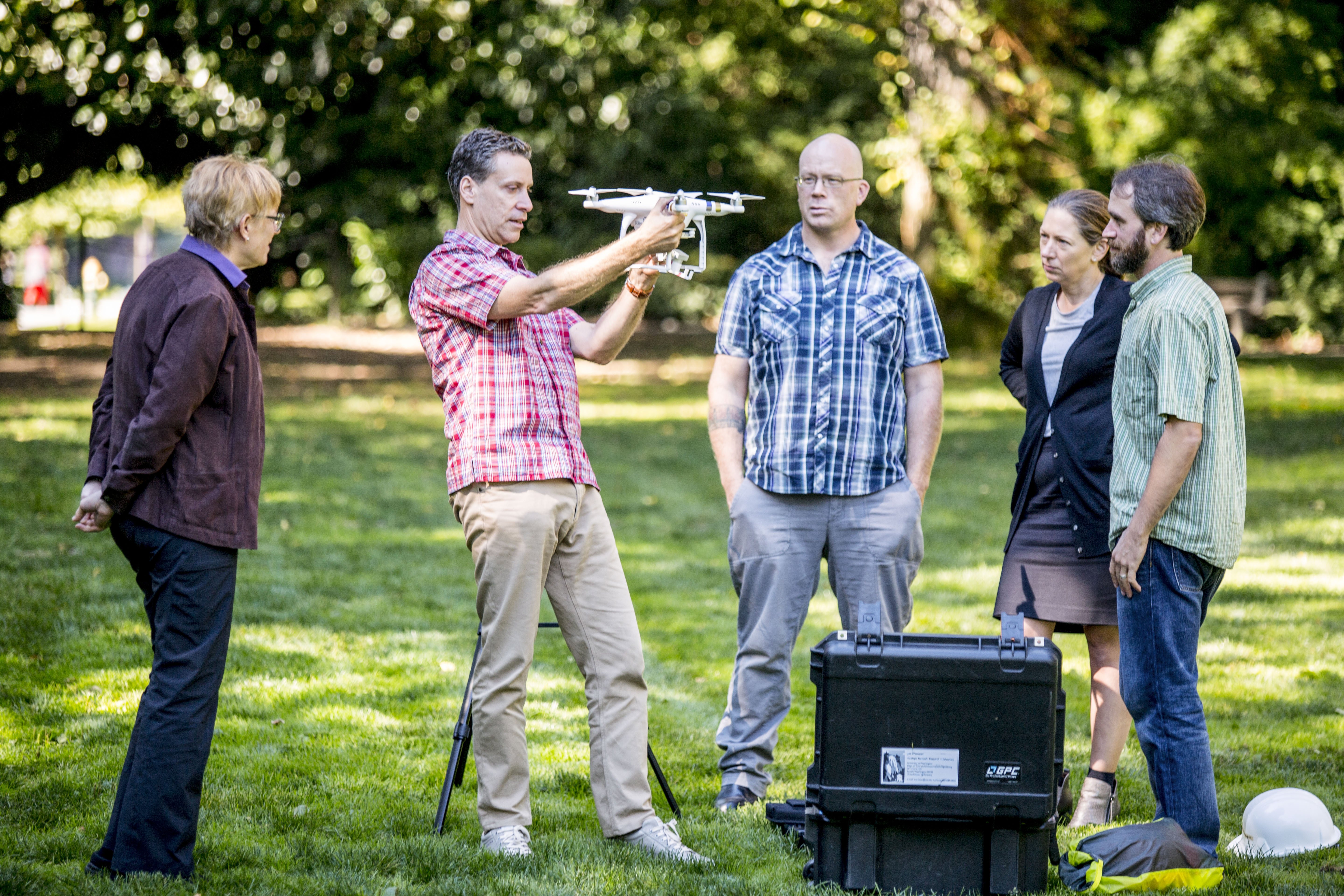University of Washington Joins NHERI
Published on November 2, 2016
Jordan Moss, UTSA College of Engineering

Time is of the essence when it comes to collecting important data following a natural disaster.
If researchers cannot get into the field quick enough, information on the effects of a natural disaster on everything from buildings, to bridges, roads and people could be lost forever. The University of Washington (UW) is now home to the Rapid Response Research Facility (RAPID) that will help ensure that as much of this precious data as possible is not lost.
"Often with rescue and response efforts, this very valuable data disappears really quickly," Joe Wartman, the director of the facility and a UW associate professor of civil and environmental engineering said. "By collecting this data in the immediate aftermath of a disaster, we can begin to understand what went wrong and why. This allows us to better prepare and take precautionary measures in advance of future events."
The UW RAPID Facility is funded by a $4.1 million investment from the National Science Foundations Natural Hazards Engineering Research Infrastructure (NHERI) grant. The facility will provide the tools to help quickly collect and assess critical post-disaster data.
The data collected post-disaster will help engineers and builders to better prepare for their structures to survive future disasters.
The RAPID team will focus on two types of natural hazards: wind hazards, such as tornados and coastal storms; and earthquakes, including ground failure and tsunamis. The team will utilize next-generation tools including drones and laser scanning equipment. Additionally mobile devices for social surveys and mixed-media recording, seismic instruments, and sensors that are capable of measuring data at the centimeter scale will be available to the team.
New software tools capable of transmitting, integrating, exploring, and visualizing the data sets will be created at the RAPID Facility. Amongst them will be mobile apps designed to assess structural damage in the field and a platform to gather mixed-media social data. The facility even features a computer-automated virtual reality environment that will allow people to walk into a room and see a disaster in three dimensions.
The idea is that you can use the facility to collect data either through our staff or our training and then you can come to the center months later and recreate the field experience by walking through a damaged building or looking at how much a particular area flooded, Wartman said.
Data collected by the RAPID team will be stored and made available for future use by researchers, practitioners, and policymakers. At the RAPID Facility one of the main goals is to better inform mathematical models used in predicting damage to buildings, bridges, levies, and other parts of a citys infrastructure that could suffer in a natural disaster.
Jeffrey Berman, an associate professor of civil and environmental engineering at UW and one of the projects principal investigators, says the real-world data will help improve the existing models.
These computational models require real-world data to be calibrated and validated, Berman said. Post-disaster data will help us improve the various models necessary for understanding losses from natural disasters.
An interdisciplinary faculty team will be working in the new facility. Laura Lowes, an engineering professor, will focus on structural engineering analyses; Troy Tanner, a physics laboratory research scientist will take charge of software development; and Ann Bostrom, a professor of the Evans School of Public Policy, will focus on data collection methods for social science.
Scott Miles, a research scientist in human centered design and engineering and third UW principal investigator, is leading the development of social science and citizen science tools for the RAPID Facility. Miles notes that the facility will be an important tool in the future understanding of post-disaster social impacts on society.
Understanding post-disaster social impacts and responses is one of the most challenging aspects of reconnaissance, Miles said. The RAPID Facility will provide unprecedented resources to innovate workflows and tools for systematic collection of qualitative and quantitative data for social scientists.
For more information on the UW RAPID Facility and the NHERI grant please visit https://www.designsafe-ci.org.







